There are very few people who are as learned as Leonardo da Vinci was. We list some interesting trivia about the famous renaissance arist on his 564th birth anniversary
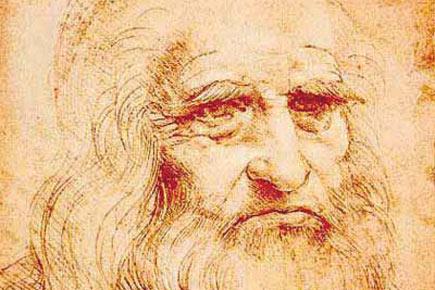
Leonardo da Vinci
There are very few people who are as learned as Leonardo da Vinci was. Born on April 15, 1452, Leonardo was a painter, sculptor, architect, musician, scientist, mathematician, engineer, inventor, anatomist, geologist, cartographer, botanist and writer. Here's more:
ADVERTISEMENT
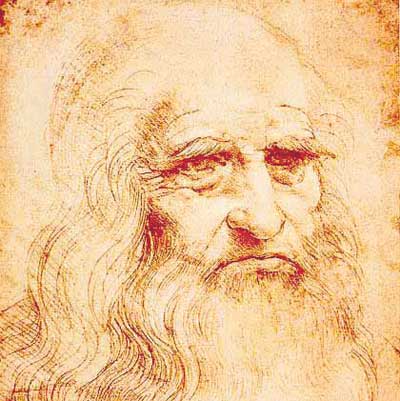
Leonardo da Vinci's self-portrait
>> Leonardo was the illegitimate son of the wealthy Messer Piero Fruosino di Antonio da Vinci, a Florentine legal notary, and Caterina, a peasant.
>> As a child Leonardo da Vinci was an extremely quick learner and adept at improvisation. When studying arithmetic, he made remarkable progress and could baffle his teacher with the questions and problems that he raised.
>> According to account by Renaissance biographer Giorgio Vasari, after learning to play the lyre as a child, Leonardo da Vinci created one in 1479 in the shape of a horse. It was made "mostly of silver", and of "sonorous and resonant" tone. Da Vinci was sent to the Duke of Milan Ludovico Sforza's court by Lorenzo de' Medici to present this lyre to the Duke as a gift where his performances so far surpassed those of Ludovico's court musicians.
>> Leonardo da Vinci was a strict vegetarian due to his immense love of animals. He even questioned the morality of eating animals when it was not necessary for health.
>> Another one of Giorgio Vasari's accounts described Leonardo da Vinci possessing incredible physical strength in his youth. He was physically so strong that he could withstand violence and with his right hand he could bend the ring of an iron door knocker or a horseshoe as if they were lead.
>> Leonardo da Vinci's penchant for writing in reverse order or mirror image is mostly considered by many as his need to keep his works secret. It has been pointed out in some sources that due to his left-handeness Da Vinci could merely be using the method for practical purposes as it was easier for him to write that way.
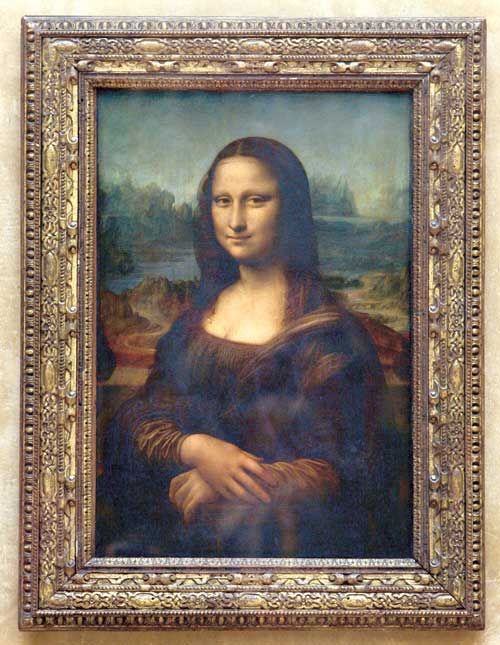
The Mona Lisa. Pic/AFP
>> Guinness World Records lists Leonardo da Vinci's Mona Lisa as having the highest insurance value for a painting in history. On permanent display at The Louvre museum in Paris, the Mona Lisa was assessed at US$100 million on December 14, 1962. Taking inflation into account, the 1962 value would be around US$780 million in 2015.
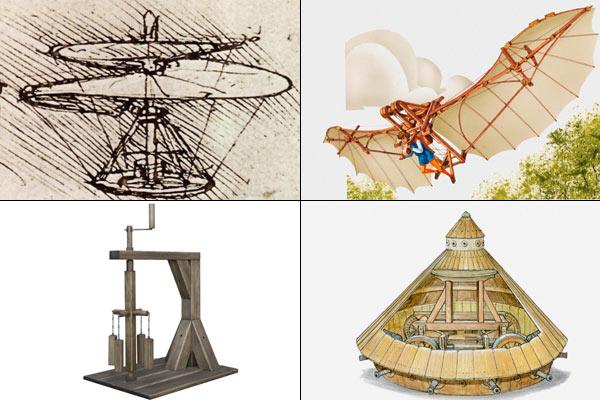
(Clockwise from left) Sketches of a helicopter, ornithopter flying machine, tank and flywheel
>> Da Vinci also made important discoveries in anatomy, optics, civil engineering, and hydrodynamics, but his failure to publish his findings limited their influence on the future course of science.
>> Beyond friendship, Leonardo da Vinci kept his private life secret. His sexuality has been the subject of satire, and speculation. His most intimate relationships were perhaps with his pupils Salai and Melzi, both men. Court records of 1476, when he was 24, show that Leonardo and three other young men were charged with sodomy, and acquitted.
>> Leonardo da Vinci is revered for his technological ingenuity. He conceptualised a helicopter, a tank, concentrated solar power, a calculator, the double hull and outlined a rudimentary theory of plate tectonics. But few of his designs were feasible during his lifetime.
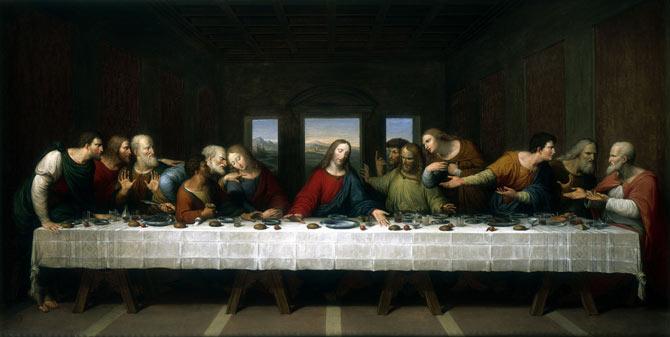
The Last Supper
>> Leonardo da Vinci's The Last Supper, the most reproduced religious painting of all time, has also been the target of much speculation by writers and historical revisionists alike, usually centered on purported hidden messages or hints found within the painting. Some have identified the person to Jesus' right (left of Jesus from the viewer's perspective), not as John the Apostle, but a woman, often purported to be Mary Magdalene. This speculation was the topic of the book The Templar Revelation (1997) by Lynn Picknett and Clive Prince, and plays a central role in Dan Brown's fiction novel The Da Vinci Code (2003). Ross King's book Leonardo and the Last Supper asserts that the person is indeed John the Apostle.

The Virgin and Child with Saint Anne
>> The Louvre management courted controversy in 2011, when two art historians who were accused of "overcleaning" Leonardo da Vinci's masterpiece The Virgin and Child with Saint Anne resigned from their posts.
>> An Italian art historian claimed that the model for Leonardo da Vinci's painting The Mona Lisa was actually his student Salai. Salai, born Gian Giacomo Caprotti worked as an apprentice with the artist for more than two decades from 1490 and was believed to have modelled for some of da Vinci's famous works. Some experts had already suggested that Leonardo could have based his masterpiece on a self portrait. But Vinceti, who has been analysing the painting using state-of-the-art high-magnification techniques, also claims to have found the letter 'S' in the model's eyes, which may be a reference to Salai. The claims caused a stir in the art world, with many dismissing the idea that Mona Lisa was a man.
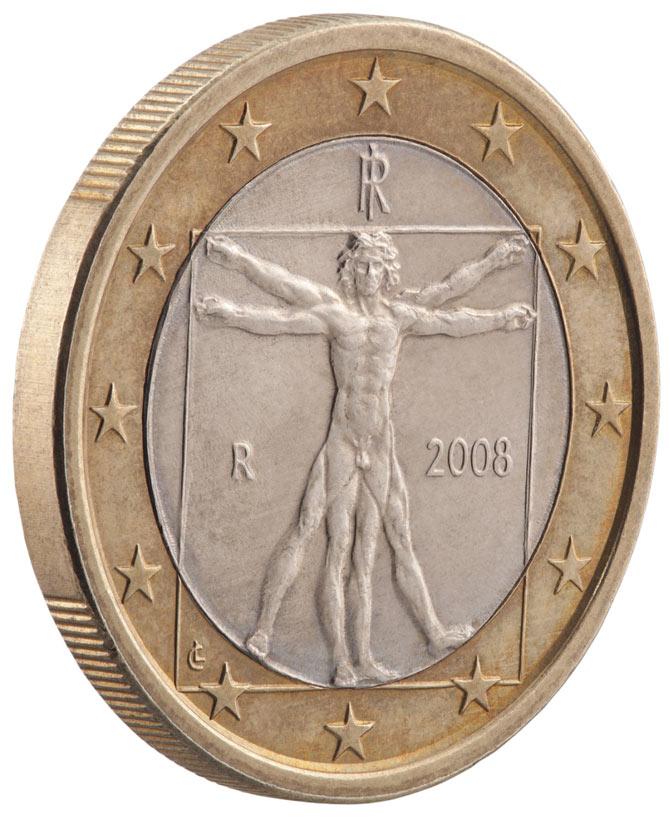
The image of the Vitruvian Man engraved on the Italian 1 Euro coin
>> Leonardo's drawing of the Vitruvian Man is also regarded as a cultural icon.
>> A team of art historians led by Professor Silvano Vincenti, attempted to dig up remains of Lisa Gherardini Del Giocondo, the woman believed to be the model for the Mona Lisa portrait in a bid to extract her DNA and recreate her face.
>> There are records that the King Francis I, who shared a close friendship with the artist held Leonardo da Vinci's head in his arms as he died on May 2, 1519 at Clos Lucé, although this story may be legend rather than fact.
 Subscribe today by clicking the link and stay updated with the latest news!" Click here!
Subscribe today by clicking the link and stay updated with the latest news!" Click here!






